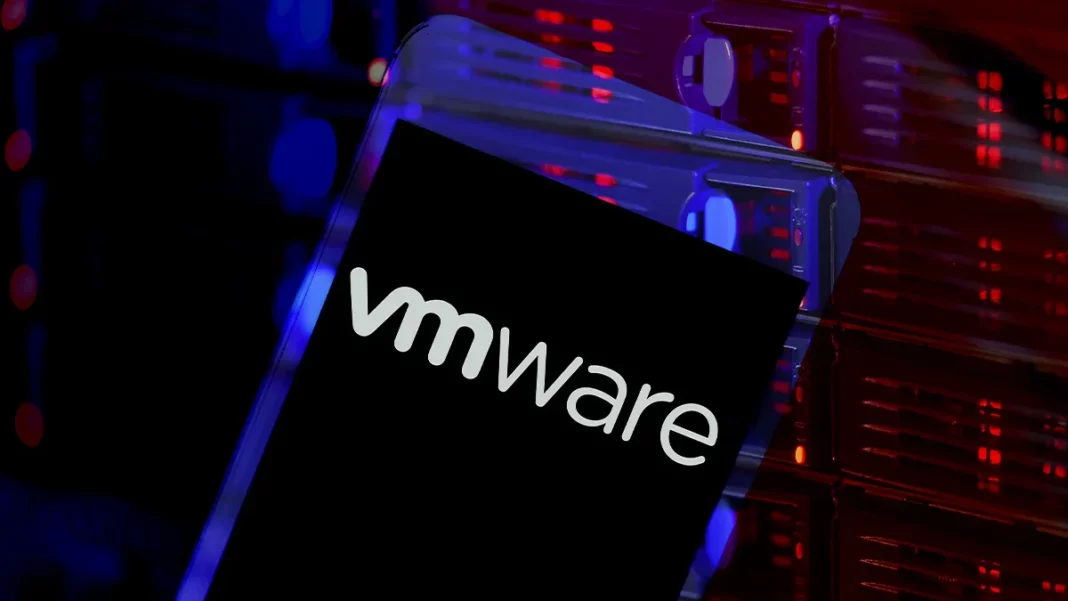VMware has become aware of a potentially critical security concern surrounding VMware Aria Operations for Logs, formerly known as vRealize Log Insight. A proof-of-concept (PoC) exploit code has surfaced, posing a significant risk to users. In this article, we’ll delve into the details of this authentication bypass vulnerability, tracked as CVE-2023-34051, and explore measures to protect your system.
Understanding CVE-2023-34051
The vulnerability CVE-2023-34051, with a CVSS score of 8.1, is classified as an authentication bypass vulnerability within VMware Aria Operations for Logs. This flaw could potentially allow an unauthenticated, malicious actor to inject files into the appliance’s operating system, ultimately leading to remote code execution.
VMware has officially acknowledged the presence of exploit code for CVE-2023-34051, emphasizing the severity of this vulnerability. This development raises the urgency of taking protective measures.
The Discovery
This alarming vulnerability was initially brought to light by the diligent cybersecurity firm, Horizon3. Their technical analysis of the flaw, published earlier, demonstrated the potential dangers associated with the CVE. In fact, researchers at Horizon3 managed to exploit three distinct CVEs to achieve remote code execution, revealing the critical nature of the issue.
While investigating these security concerns, the researchers found that VMware’s initial solution fell short of addressing the vulnerabilities adequately. Acting responsibly, Horizon3 promptly reported this new issue to VMware, leading to its subsequent resolution in VMSA-2023-0021.
Indicators of Compromise
If you’re concerned about your system’s vulnerability to CVE-2023-34051, you can reference the same indicators of compromise that were released for VMSA-2023-0001. These indicators can help you identify potential threats and suspicious activities on your system.
The Proof-of-Concept Exploit
To add to the complexity of the situation, Horizon3 has released a PoC exploit for this vulnerability. This PoC leverages IP address spoofing and exploits various Thrift RPC endpoints to achieve arbitrary file writes. By default, the vulnerability is used to create a cron job that establishes a reverse shell. It’s crucial to adapt the payload file to your specific environment for adequate protection.
For the attack to be successful, the attacker must share the same IP address as a master or worker node. This added layer of complexity highlights the need for immediate action to secure your environment.
Protecting Your VMware Aria Operations for Logs
In light of these developments, it’s imperative for organizations using VMware Aria Operations for Logs to take immediate action to safeguard their systems. Here are some steps to consider:
- Apply Security Updates: Keep your VMware software up to date with the latest security patches and updates from the vendor.
- Monitor for Suspicious Activity: Regularly monitor your system for any unusual or suspicious activities that could indicate an attempted breach.
- Implement Network Segmentation: Isolate critical systems and networks to limit the potential attack surface for malicious actors.
- Access Controls: Review and strengthen access controls and authentication mechanisms within your environment.
- Educate Your Team: Ensure that your team is well-informed about the potential risks and best practices for mitigating them.
- Incident Response Plan: Develop and test an incident response plan so that you’re well-prepared to respond to any security incidents.
By taking these proactive measures, you can significantly reduce the risk posed by CVE-2023-34051 and similar vulnerabilities. The security of your VMware Aria Operations for Logs system is of paramount importance, and swift action is essential in today’s threat landscape.
In conclusion, CVE-2023-34051 poses a substantial risk to users of VMware Aria Operations for Logs. However, by staying informed and implementing the recommended security measures, you can significantly enhance your system’s defenses. Cybersecurity is an ongoing process, and it’s crucial to adapt and evolve your security practices to protect against emerging threats.





